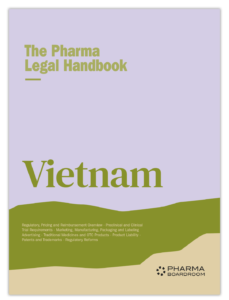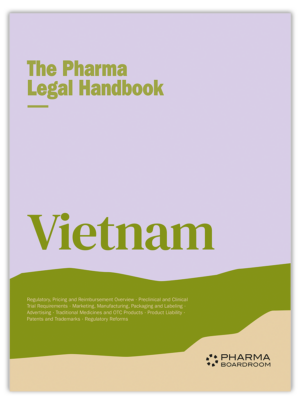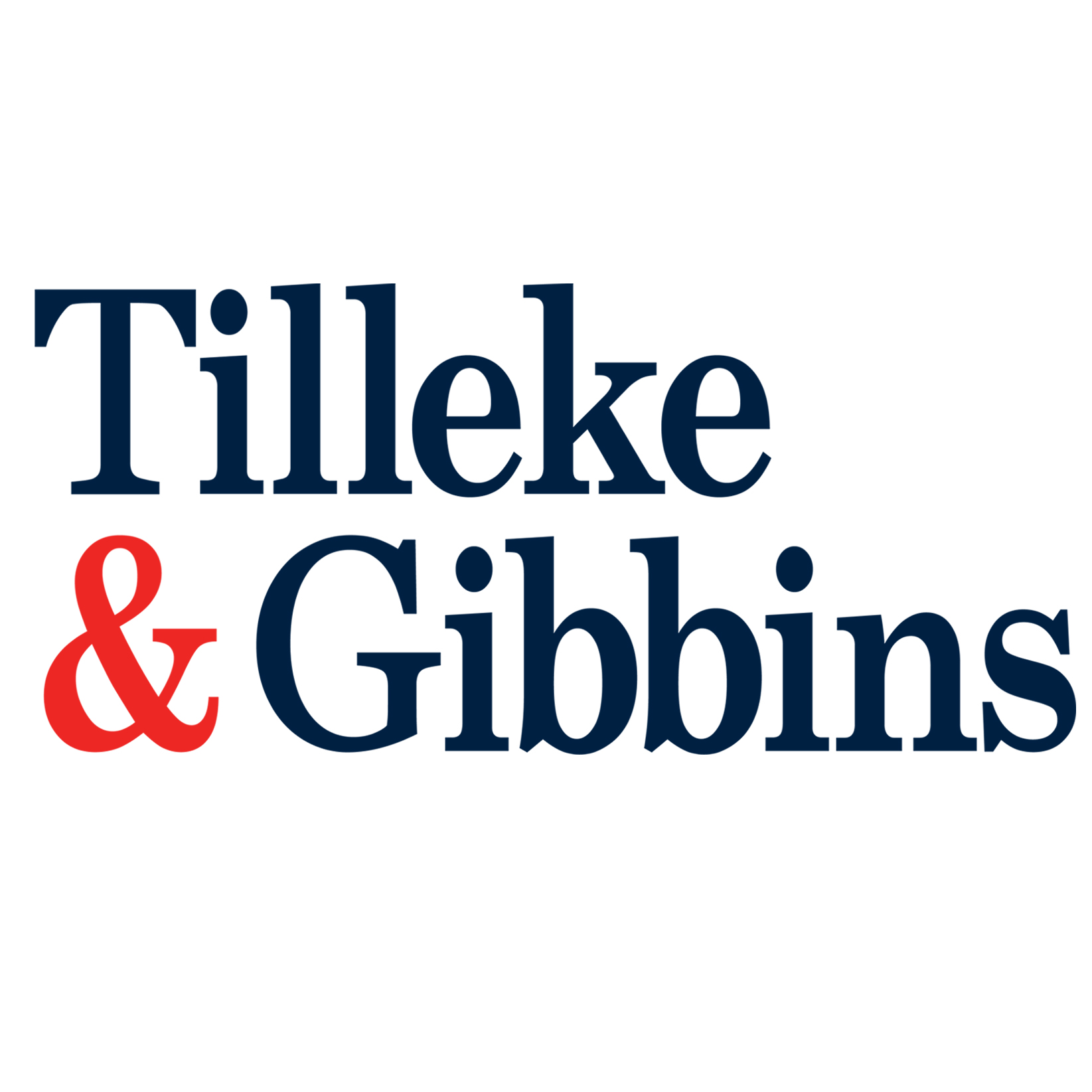The Pharma Legal Handbook: Vietnam
 Vietnam stands to become an increasingly important pharma investment destination in the coming years, although there is still much work to be done to bring all aspects of the country’s pharma value chain up to international standards. Additionally, local regulatory and legal insight is crucial to navigating the Vietnamese market’s particularities. This is what makes The Pharma Legal Handbook: Vietnam an invaluable resource.
Vietnam stands to become an increasingly important pharma investment destination in the coming years, although there is still much work to be done to bring all aspects of the country’s pharma value chain up to international standards. Additionally, local regulatory and legal insight is crucial to navigating the Vietnamese market’s particularities. This is what makes The Pharma Legal Handbook: Vietnam an invaluable resource.
This is what makes The Pharma Legal Handbook: Vietnam is an indispensable tool for all stakeholders already operating in the Vietnamese pharma market or looking to expand their footprint there.
Produced in collaboration with Tilleke & Gibbins – a full-service regional law firm in Southeast Asia, with over 180 lawyers and consultants
September 2022
1. Orphan Drugs & Rare Diseases: Vietnam
1. What is the definition of Rare Diseases in your country?
There are no legal documents in Vietnam providing a definition of “rare diseases.”
2. Does the designation of ‘Orphan Drug’ exist in your country? (Does it correspond with the definition of Rare Diseases?)
An orphan drug is a drug that is used for prevention, diagnosis, or treatment of a rare disease or a drug that is not always available as stipulated by the Minister of Health or Ministry of Health (MOH).
The MOH has issued Circular No. 26/2019/TT-BYT dated 30 August 2019 promulgating the list of orphan drugs. Under this list, the name of the active ingredients, route of administration, dosage form, concentration/strength, and indication are included.
3. What is the regulatory framework for the authorization of an Orphan Drug? (Is this regulatory framework based on Rare Disease status or can it alternatively be based on Orphan Drug foreign status?)
The primary legislation for pharmaceuticals in Vietnam is the Law on Pharmacy No. 105/2016/QH13, which was issued on 6 April 2016 and took effect on 1 January 2017.
Subordinate legislation includes Decree No. 54/2017/ND-CP guiding the implementation of the Law on Pharmacy, which was issued on 8 May 2017 and took effect on 1 July 2017, as amended by Decree No. 155/2018/ND-CP, which was issued and took effect on 12 November 2018.
Further regulations on other matters such as labelling and package inserts, drug quality, clinical trials of drugs and marketing authorization (“MA”) are regulated by the Ministry of Health in its ministerial circulars. In particular, the marketing authorization of drugs follows Circular No. 32/2018/TT-BYT of the MOH dated 12 November 2018 on MA for drugs and medicinal ingredients (“Circular 32”), as amended by Circular No. 29/2020/TT-BYT dated 31 December 2020 and Circular No. 23/2021/TT-BYT dated 9 December 2021.
In short, there are two routes for obtaining authorization for circulation of an orphan drug in Vietnam:
(i) Obtaining an import license: This is applicable to an orphan drug granted marketing authorization in at least one country in the world. The import license is valid for a maximum of one year and there is a limit on the drug quantity.
(ii) Obtaining a MA: This is applicable to all drugs including orphan drugs. The MA is valid for a maximum of five years and there is no limit on the drug quantity.
4. Does your country have provisions for relaxed clinical trial/scientific evidence requirements in respect of Orphan Drugs as compared to other drugs?
No, there are no specific provisions for relaxed clinical trials/scientific evidence requirements in respect of orphan drugs.
5. Is there an expedited pathway for Orphan Drugs?
The registration dossier for obtaining a MA for an orphan drug may be subject to the quick evaluation procedure of the DAV if requested by the applicant. The theoretical timeline for this evaluation procedure is only six months from the receipt date of a complete drug registration dossier, while it is 12 months for the normal evaluation procedure.
6. Are foreign marketing authorizations recognized in your jurisdiction for Orphan Drugs? If yes, marketing authorizations from which countries are recognized?
No; foreign MA licenses are not recognized in Vietnam for any drugs, including orphan drugs.
7. Can Orphan Drugs be reimbursed? If so, is there a specific reimbursement procedure for Orphan drugs?
Yes, orphan drugs can be reimbursed in Vietnam but there is no specific reimbursement procedure for this type of drug.
8. How are the prices of Orphan Drugs regulated?
As with other types of drugs, pharmaceutical establishments must declare their drug prices to the DAV. After an MA has been issued, the importer/manufacturer must declare to the DAV the estimated wholesale price and (optionally) the estimated retail price for the drug before the first lot is circulated in Vietnam. Any change in the declared price must be re-declared to the DAV.
Distributors should not sell drugs at prices higher than the declared prices, and the declared prices should not be higher than the prices of the same drugs in ASEAN countries where such drugs are imported and sold.
9. In case of reference price based on a basket of countries, what countries are included?
The prices in other ASEAN countries will be referred to.
10. Have there been any significant legal/judicial developments in relation to Orphan Drugs in your country?
No.
11. Are there proposals for reform or significant change to the regulation of Orphan Drugs? If yes, when are they likely to come into force?
No.
Also from this Legal Handbook
2. Regulatory Reforms: Vietnam
1. Are there proposals for reform or significant change to the healthcare system?
Law on Medical Examination and Treatment
The draft version of an amended Law on Medical Examination and Treatment was submitted to the National Assembly in May 2022 for discussion. Once adopted, the new law will repeal the current Law on Medical Examination and Treatment No. 40/2009/QH12 dated 23 November 2009.
Among other changes, the draft law provides for a mandatory requirement on Vietnamese language that will be applicable to non-local healthcare practitioners. Under the draft law, foreign and overseas Vietnamese practitioners are required to be fluent in Vietnamese and to use Vietnamese in examination and giving prescriptions. The satisfaction of Vietnamese proficiency must be examined by a medical education institution appointed by the MOH. A practitioner that does not satisfy this requirement must register the language that will be used in their practice and equip themselves with a translator. Such translator, if non-Vietnamese, also needs to satisfy the examination on Vietnamese proficiency hosted by a medical education institution appointed by the MOH.
Law on Pharmacy
The National Assembly published a draft of an amended Law on Pharmacy revising and supplementing some articles of the 2016 Law on Pharmacy. Among other changes, the draft provides a list of drugs for external use whose application dossiers for MA will be submitted to the provincial DOH (not the DAV), new regulations on bioequivalence of generic drugs, and new principles of the assessment of drug prices declared and re-declared by establishments trading drugs.
Circular on Drug Registration
The MOH published a new draft circular on the registration of drugs and medicinal ingredients to replace Circular 32/2018/TT-BYT on the same subject on 29 December 2021. Notable changes compared to the previous circular include, among others, requirements for a drug CPP and new specific provisions on quality documentation in the case of materials having a certificate of suitability (CEP).
2. When are they likely to come into force?
The revised Law on Medical Examination and Treatment, Law on Pharmacy and circular on drug registration are scheduled to be released in the near future.
Also from this Legal Handbook
3. Patents & Trademarks: Vietnam
1. What are the basic requirements to obtain patent and trademark protection?
PATENT
To qualify for patent protection, an invention must meet the following basic conditions:
- Be globally novel;
- Involve an inventive step; and
- Have its subject matter capable of industrial application.
TRADEMARK
To be eligible for protection as a trademark, a mark must be:
-
A visible sign in the form of letters, words, drawings, or images, including three-dimensional images, or a combination of these, represented in one or more colors; or sound marks that can be represented in graphical form and
-
Capable of distinguishing goods or services of the mark owner from those of other subjects (that is, it is distinctive).
2. What agencies or bodies regulate patents and trademarks?
The Intellectual Property Office of Vietnam (“IP Office”) under the Ministry of Science and Technology is the authority managing patents and trademarks.
3. What products, substances, and processes can be protected by patents or trademarks and what types cannot be protected?
PATENT
A technical solution in the form of a product or process which is intended to solve a problem by application of natural laws can be protected with a patent. The following subject matters are excluded from patentability:
- Discoveries, scientific theories and mathematical methods;
- Schemes, plans, rules and methods for performing mental acts, training domestic animals, playing games, or doing business; computer programs;
- Presentations of information;
- Aesthetic solutions;
- Plant varieties, animal varieties;
- Processes of essentially biological processes for the production of plants and animals, except microbiological processes;
- Prevention, diagnostic and therapy methods for treatment of human or animals.
TRADEMARK
Any sign used to distinguish goods or services of different organizations or individuals is eligible for registration for trademark protection. The following signs cannot be registered as trademarks:
- Signs that are identical or confusingly similar to (i) national flags or emblems, (ii) symbols, flags, insignias, full names, or abbreviated names of state agencies or other social organizations, (iii) names of Vietnamese or foreign national leaders, heroes and celebrities, or certification seals of international organizations.
- Signs that mislead, confuse or deceive consumers as to the origin, nature, intended purposes, quality, value or other characteristics of the goods or services.
- Signs that are the inherent shape of the goods or which are required by the technical characteristics of the goods.
- Signs containing a copy of a copyrighted work, except with the permission of the copyright owner.
4. How can patents and trademarks be revoked?
A patent or trademark can be wholly revoked if it is found that the applicant had neither the right to registration nor had been assigned such right, or the patented invention/trademark did not satisfy the protection requirements at the grant date of the patent/certificate. It can also be partially revoked if part(s) of it fail(s) to satisfy the protection requirements.
A trademark in Vietnam is subject to non-use cancellation if it has not been used for five consecutive years.
The amended Intellectual Property Law of 2022 (taking effect on 1 January 2023 introduces some additional grounds for patent and trademark invalidation.
Patent
A patent is invalidated in its entirety if:
- The patent application is filed in violation of the security control regulations; or
- The invention is directly created based on genetic resources or traditional knowledge about genetic resources but the patent application does not disclose or incorrectly discloses the origin of the genetic resources or traditional knowledge about genetic resources contained in that application.
A patent is invalidated in whole or in part if:
- An amendment expands the scope of the disclosed subject matters or changes the nature of the subject matters claimed in the application;
- The invention is not sufficiently and clearly disclosed in the specification;
- The patented invention extends beyond the scope of the disclosure in the original specification; or
- The invention does not meet the first-to-file principle.
Trademark
A trademark registration can be terminated if:
- Such registered trademark has become the common (generic) name of goods or services bearing that registered trademark; or
- The use of the protected trademark by the owner of the trademark or by a person authorized by the owner misleads consumers as to the nature, quality, or geographical origin of the goods or services.
A trademark registration can be partly or entirely invalidated if:
- The applicant for that trademark registration is ruled to have acted in bad faith; or
- The revision or modification of a trademark application has broadened or changed the nature of the originally filed trademark.
5. Are foreign patents and trademarks recognized and, if so, under what circumstances?
All foreign inventions need to undergo the local patent registration process at the IP Office. No foreign patents can be recognized in Vietnam.
While registration in Vietnam is generally a prerequisite for a mark to be protected as a trademark, well-known trademarks are recognized on the basis of use and their registration is not required. There are various criteria for the determination of whether a trademark is “well-known,” such as the number of protections obtained for such trademark in foreign countries, or the licensing value of such trademark. Other foreign trademarks need to undergo the local registration process at the IP Office.
6. Are there any non-patent/ trademark barriers to competition to protect medicines or devices?
Vietnam has a data exclusivity period for drugs, which lasts from the date the trial data is filed to the date of expiration of the five-year validity of the MA granted to an applicant with confidential trial data. However, the protection mechanism is not very effective in practice.
7. Are there restrictions on the types of medicines or devices that can be granted patent and trademark protection?
Generally, there is no restriction on the types of medicines and devices that can be granted patent and trademark protection. However, prevention, diagnostic and therapy methods for treatment of humans or animals cannot be protected by patents.
8. Must a patent or trademark license agreement with a foreign licensor be approved or accepted by any government or regulatory body?
It is not mandatory to obtain an approval or acceptance of patent or trademark license agreements, including one with a foreign licensor, in order for such agreements to be valid against the contracting parties. However, for a patent license agreement, it is only valid against any third party upon registration with the IP Office.
Also from this Legal Handbook
4. Product Liability: Vietnam
1. What types of liability are recognized in your jurisdiction?
The following types of liability are recognized under Vietnamese laws: disciplinary liability, administrative liability, civil liability and criminal liability.
2. How do these types of liabilities apply to the manufacturers of medicines and devices?
Provisions on product liability can be found in a variety of legislation, as follows:
- Law on Quality of Products and Goods No. 05/2007/QH12 dated 21 November 2007;
- Law on Consumer Protection No. 59/2010/QH12 dated 17 November 2010; and
- Civil Code No. 91/2015/QH13 dated 24 November 2015.
This legislation provides mostly for administrative liability, i.e., the administrative fines and additional penalties in case of defective medicines or devices. The Civil Code provides for the tortious basis for a consumer/victim to claim damages against the tortfeasor.
3. Does potential liability extend to the manufacturer only or could claims extend to corporate executives, employees, and representatives?
Under the Law on Consumer Protection, liability extends to the following entities:
- The manufacturer, importer, holder of affixed trademarks, and direct supplier (such as retailer) of the product are liable for all actual damages directly caused by defective products, regardless of intent.
- The goods trader is responsible for providing accurate information about the product to the consumer.
For defective medicinal products, the following entities can be liable under the Law on Pharmacy, the Law on Consumer Protection and Circular 32:
- Manufacturers, importers, and import commission agents are liable for the quality of the medicine they manufacture or import.
MA holders are liable for the safety, effectiveness, and quality of their medicines, and for ensuring that the medicines are distributed in the market in accordance with the MA dossiers.
4. How can a liability claim be brought?
COMPLAINTS
Consumers have the right to lodge complaints on inferior-quality medicines with a consumer protection authority (e.g., the Consumer Protection Division under the Vietnam Competition and Consumer Protection Administration of the Ministry of Industry and Trade, the provincial People’s Committees, the provincial Departments of Industry and Trade, and units under the district People’s Committees) and claim compensation from the manufacturers and traders for damages caused by the medicines.The law does not state any limitation periods that apply to a consumer protection rights’ claim.
CLASS ACTIONS
Vietnam does not provide for class-action lawsuits of the kind found in other jurisdictions. Under the 2015 Civil Procedure Code, multiple parties (co-plaintiffs) can bring a lawsuit against another party regarding one legal relation or many interrelated legal relations for settlement in the same case.
Also, depending on the case, organizations protecting consumer and social interests are allowed to bring civil lawsuits to request courts to protect the public interest.
5. What defences are available?
For product liability claims, the Law on Consumer Protection sets out that:
- The claimant has the burden of proof to show that it has suffered damage as a direct and foreseeable result of a product defect, and her or she was not at fault for causing the loss and damage;
- The defendant is not liable to pay compensation for loss and damage if it can prove that the defect in the goods was undiscoverable by scientific or technical standards at the time the trader supplied goods to the consumer.
Also from this Legal Handbook
5. Traditional Medicines and OTC Products: Vietnam
1. What are the regulatory requirements for traditional, herbal, complementary, or alternative medicines and devices?
The Law on Pharmacy and its implementing regulations are equally applicable to modern drugs and traditional and herbal drugs.
There is no notion of alternative devices in Vietnamese law and therefore the legal framework for devices is applicable to all devices.
2. Can these traditional, herbal, complementary, or alternative products be advertised directly to the public?
Please see question 17 of Marketing, Manufacturing, Packaging & Labeling, Advertising.
3. What health, advertising, and marketing claims may be made for traditional, herbal, complementary, or alternative products?
A drug advertiser may only make advertising claims that conform to the drug label and leaflet, the dissertation on the drug in the National Pharmacopoeia of Vietnam, and related instructions provided or recognized by the MOH.
4. What are the regulatory requirements for over-the-counter (non-prescription) medications?
The MOH is responsible for issuing a list of approved OTC medications in Vietnam. This list was included in Circular No. 07/2017/TT-BYT dated 3 May 2017.
Drugs are considered for selection for the OTC list when they meet the following criteria:
- Low toxicity, no toxic degradation products, and no serious adverse reactions that are known or warned against by the World Health Organization, regulatory authorities of Vietnam or foreign countries;
- Dosage range is wide and safe for various age groups, with no significant effect on the diagnosis and treatment of diseases that need clinical monitoring;
- Drugs are indicated to treat common diseases which can be administered by patients themselves without a prescription or monitoring from medical practitioners;
- Simple dosage forms (oral, topical administration), and appropriate concentration for self-treatment by patients;
- Rare interaction with other drugs or common foods and drinks;
- Limited possibility to cause dependence;
- Limited risks of overdose or misuse affecting the safety of the users;
- Have been sold in Vietnam for at least five years.
5. Are there any limitations on locations or channels through which OTC products may be sold?
OTC drugs can only be sold at pharmaceutical retailing establishments, including pharmacies, internal medicine kiosks, and medicine stations of communal health clinics.
6. What health, advertising, and marketing claims may be made for OTC products?
Please see question 3 (above).
7. Can OTC products be marketed or advertised directly to the public?
Please see question 17 of Marketing, Manufacturing, Packaging & Labeling, Advertising.
8. What is the mechanism by which a prescription-only product can be converted to an OTC product?
There is no clear-cut mechanism for a conversion. Pharmaceutical business entities and healthcare establishments can make proposals to the DAV regarding an amendment or addition of new drugs to the list of OTC products based on the market situation and the demand of drugs for treatment to the DAV. The DAV then makes its recommendations to the MOH for the amendment of the list of OTC products based on such proposals or the conclusion of the MA Advisory Council.
9. What are the requirements for the importation of either traditional medicines or OTC products?
Drugs for which an MA has been granted can be imported into Vietnam with the desired volume without the need of an import license.
An import license must be obtained for importation of the following:
- Drugs without an MA;
- Drugs for which an MA has been granted but the available quantity is not sufficient for treatment;
- Drugs that contain an herbal ingredient that is used in drugs for the first time in Vietnam;
- Drugs that contain an herbal ingredient of which the quantity is not sufficient for treatment;
- Drugs for urgent demand of national defense, security, prevention and elimination of epidemics, disaster recovery, or special treatment;
- Rare drugs;
- Drugs with the same trade name, active ingredients, concentrations, and dosage form as an original brand name drug which is granted an MA in Vietnam, manufactured by the same manufacturer of the original brand-name drug or an authorized manufacturer, and whose price is lower than that of the original brand name drug being sold in Vietnam at the request of the Minister of Health (parallel imports);
- Drugs for a health program of the state;
- Donation drugs;
- Drugs used for clinical trial, bioequivalence study, bioavailability assessment, as a sample for registration, testing, scientific research, or as a display at a fair or exhibition;
- Drugs for other non-commercial purposes.
The holder of the import license can only import the drugs within the quantity/quota specified in the import license.




